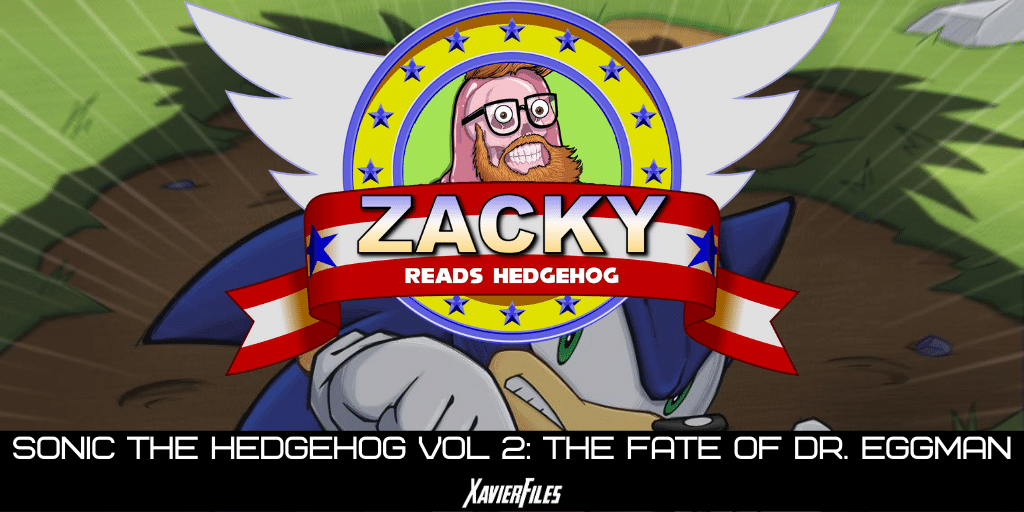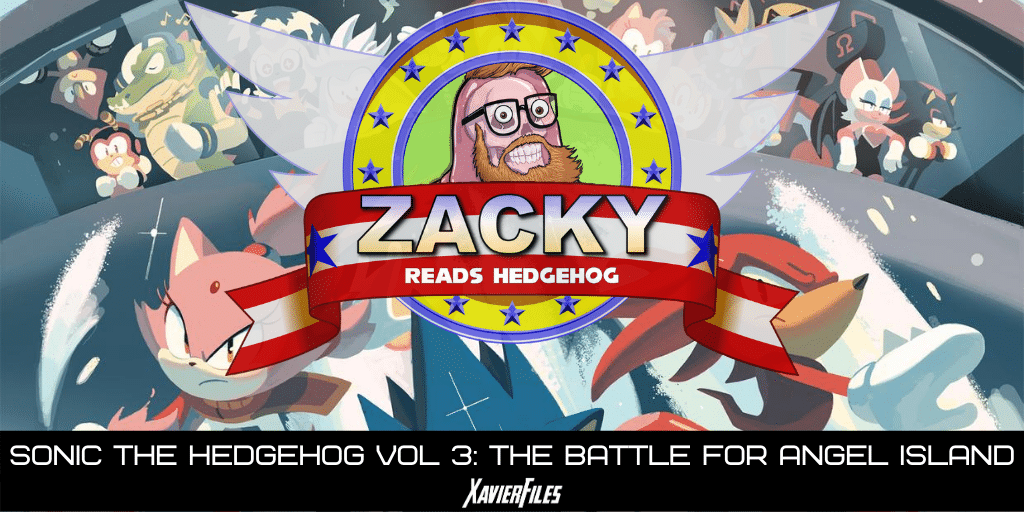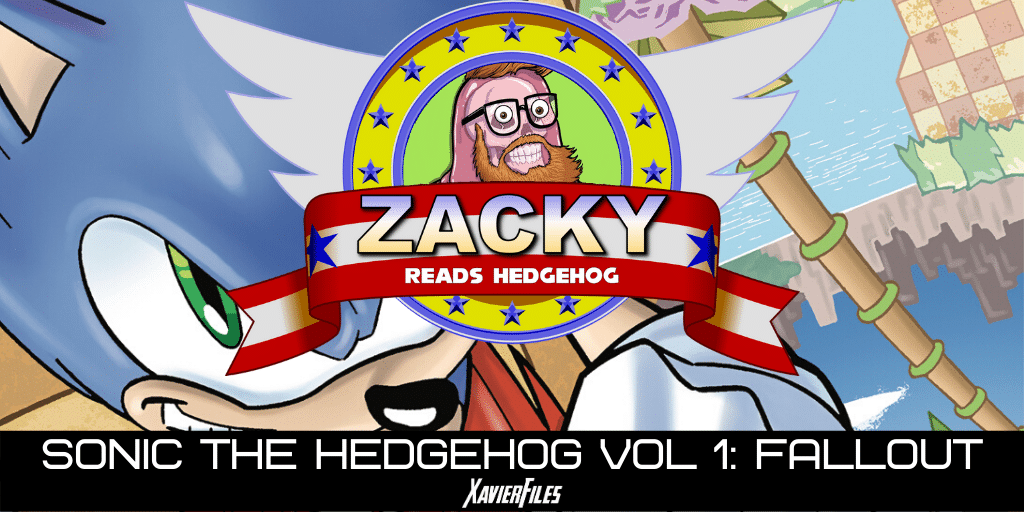Superman stands for three things: truth, justice and the American way. In many respects, the Man of Steel and his values are in direct conversation with every action comic that has come since his first one. Villains and anti-heroes are identified in comparison to Superman’s three guiding principles. He is the Jungian archetype of all heroes.
But how does Sonic the Hedgehog compare?
This arc, collected as “The Fate of Dr. Eggman,” begins with Sonic on a search for truth. Eggman has gone missing since the events of Sonic Forces, a video game I refuse to actually play, and The Chaotix Detective Agency has finally found him. Chaotix is an organization obsessed with finding truth composed of Vector the Crocodile (the strong, dumb one), Espio the Chameleon (the ninja) and Charmy Bee (a 6-year-old). Their single-minded obsession with solving mysteries is more akin to Scooby Doo than The Maltese Falcon, but that’s alright; truth comes in many forms. They are more one-dimensional friends for Sonic to meet on his quest to do, well, whatever it is he is doing in this series.

The twist comes when Chaotix introduces Sonic to Dr. Eggman, who has lost all his memories of being evil and now goes by Mr. Tinker, a kindly old man building toys for the children of Windmill VIllage. With Eggman unaware of his actions in the past, Sonic must weigh the value of punitive justice against restorative justice against no justice at all. It is at this point that we must recount the crimes of Dr. Eggman to understand what harm he has caused. His Badniks are tortured animals who have been transformed against their will into robotic killing machines. His factories cause immense pollution and have a heavy environmental impact. He has orchestrated a fascist takeover of the world and succeeded in suppressing those who would dare question his will. He once blew up the moon.
The question is, what do you do with him? Sonic and his antifa friends quickly rule out retributive justice, there is no value to be gained by punishing a man who doesn’t understand what his actions were. In their mind, Mr. Tinker did not commit these crimes and cannot be punished. What this point of view ignores is the harm that Eggman caused. Team Sonic is willing to sweep all the hurt under the rug, centering Eggman instead of the victims. What none of them suggest is a restorative justice approach, one that would force Eggman to come to terms with the harm he caused individuals, understand why there needs to be reparations and allow him to work to both fix the harm he caused and restore his place in society. Writer Ian Flynn’s silence on the topic is deafening.
This is brought to a head when Shadow the Hedgehog and Rouge The Bat show up, angry and looking for the punitive justice Sonic is so against. If Sonic is akin to Superman, Shadow is Manchester Black. He is truly the Jungian Shadow to Sonic — the unknown, dark parts of the hedgehog given life. Rouge is a bat who single-handedly caused a 300% increase in the furry population in 2001.

Shadow once worked alongside Eggman to destroy the world but turned on him and has worked since to protect it. Shadow was given another chance to make right what he once made wrong but is aghast at the idea that Eggman would get the same. Again, what Sonic, and this comic, miss as a whole, is that Shadow did work to correct the wrong he had done, while Eggman will be allowed to live without paying for any of his heinous crimes. There was a chance here to really dive into the nitty gritty of the criminal justice system and its many failings, but Flynn, and by extension Sonic, are more interested in upholding the “American way” by reinforcing the status quo.
Shadow isn’t the only “shadow” of himself Sonic must face in this arc. The next issue finally reveals who has been behind the recent surge in Badnik attacks: Neo Metal Sonic. Metal Sonic is a classic character, best known for his role as the evil Sonic before Shadow showed up. To continue the Superman parallels, Metal Sonic is Cyborg Superman because, duh. In his Neo form, he is even better than before for … reasons. His motivations are shallow, almost as if he was programmed from the start by Eggman to just be an antagonist.
And here is where the lack of accountability for Eggman really shines through. Though he may not remember them, his actions, his legacy, is the source of pain and evil in this world. It is immoral to allow the slate to be wiped clean without any acknowledgement of the harm his actions caused and continue to cause. Perhaps this is an intentional choice by Flynn. It shows that until we confront the pain we cause others, it will always come back to haunt us. Conversely, this could be a children’s comic for babies and not thinking too hard about how it reinforces outdated ideas about justice.

This trade ends with an issue of Sonic embracing the American way by unilaterally attacking Neo Metal Sonic’s production facility to stop his vague plans and maybe find some WMDs that are totally there and not at all made up. Along the way he meets up with two more characters, bringing our cast to 17 main characters in eight issues. The first newcomer is Silver the Hedgehog, a character identical to the X-Men’s X-Man in every possible way. He is also infiltrating the base, but taken aback by rumors of a “Guardian Angel” who helped the resistance fight Eggman from the shadows. It is at this point I urge you all to remember that Sonic and all his animal friends are guerilla fighters in a militia fighting robots while never considering the political ramifications of their actions.
This “Guardian Angel” is revealed to be Whisper The Wolf, a quiet fighter with a gun/stick/laser weapon who loves breaking Eggman’s toys because she wants senpai to notice her. Like Tangle, she quickly became a fan favorite and got a spinoff miniseries. Strangely enough, her design was based on Sniper Wolf from Metal Gear Solid and the white Bionicle. Unfortunately in this comic, she does very little, but does help Sonic learn about Neo Metal Sonic’s plans for world domination.

While distracting Sonic and the rest of the Resistance, Neo Metal Sonic lays siege to Angel Island, home to the Master Emerald. For those not well versed in the deep lore of Sonic, the Master Emerald is a magic plot rock that does whatever is needed. Emphasizing the American way aspect of Sonic, it is the heroes who actually control this weapon of mass destruction, leaving us on a cliffhanger to contemplate our heroes’ culpability in the world they have created.
Flynn’s Sonic the Hedgehog owes much to Superman and his tri-minded dedication to truth, justice and the American way. It is what guides the blue blur, it is what others are judged in reflection to, and it is the cause of his downfall. Perhaps Flynn wants us to think on these things and see how they caused Sonic to be so blind to the threats in front of him. Or perhaps we’re overthinking this. One can never be sure.
Zachary Jenkins co-hosts the podcast Battle of the Atom and is the former editor-in-chief of ComicsXF. Shocking everyone, he has a full and vibrant life outside all this.





